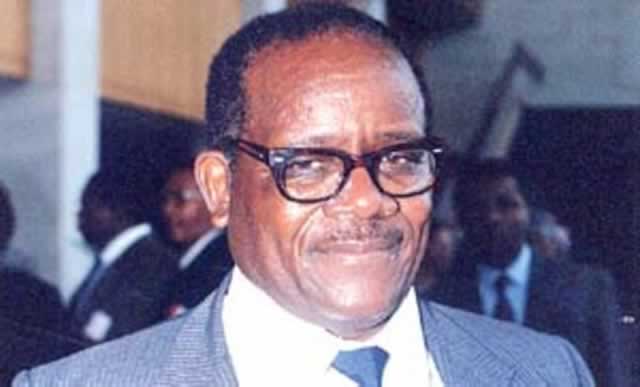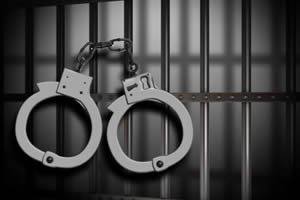Nevison Nyashanu: The liberator who loathed oppression

Former PF Zapu Deputy secretary-general and former Buhera North Member of Parliament Cde Nevison Janha Chakaipa Mukanganga Nyashanu died on December 26 2001, (at his Brechin Estate (Chinerembe) Farm in Beatrice following complications arising from hypertension.
He was 84.
Affectionately known as “Cde Ndazo Ngangira Sharp Shooter” in the liberation struggle, Cde Nyashanu will be remembered as a freedom fighter, activist, mobiliser, unifier and an educationist who played a critical role in the war against the oppressive white minority settler regime and again in the signing of the historic 1987 Unity Accord between Zanu-PF and PF-Zapu.
Cde Nyashanu was born on January 1, 1926, in Mukanganga Village under Chief Nyashanu in Buhera.
He was the first born in a family of seven — three girls and four boys.
Growing up in Mupatsi in Chikomba District, young Nevison attained his Standards 1 to 3 primary school education at St Faith Mudoti, Daramombe Circuit from 1942 to 1945.
He then proceeded to Dadaya Mission where he did Standard 6 and Form 1. He studied for his General Certificate of Education (Ordinary and Advanced Levels) through correspondence between 1961 and 1968. He furthered his education at tertiary level obtaining a diploma in Social Work from the University of Zambia’s Openheimer College and a Bachelor of Social Science Degree from Birmingham University in the United Kingdom. Thereafter, he studied Public Sector Management and graduated with a Master of Science (MSc.) in 1979.
Growing up under the harsh, oppressive and unjust colonial system, Cde Nyashanu was inspired to join the campaign for national liberation after his father, Nicholas Mukanganga Nyashanu, who was supposed to inherit the Nyashanu chieftainship, was directed to perform forced labour (chibharo) by the white settler regime.
His father vehemently refused to partake in forced labour and the move triggered in the youthful Nevison, a motivation to join the nationalist cause.
In 1955, he became a member of the Youth League in Harare (then Salisbury) which then included the likes of Cdes Chikerema, George Nyandoro, Nathan Shamuyarira and Edison Sithole among others.
The years 1957 to 1959, saw Cde Sharp Shooter become an active member of the African National Congress (ANC) and in 1960, he was also active in the National Democratic Party (NDP) as a Committee Member of Buhera and Charter Districts that were then led by Cde Earnest Hokonya.
In 1962, Cde Nyashanu was enrolled as a Zapu student’s representative in Zambia, based in Lusaka and at some time in Chingola. It is during this period when he was tasked to help the United National Independence Party (UNIP) to win the 1962 general elections.
Between March 1963 and early March 1964, Cde Ndazo Ngangira Sharp Shooter received military training at Stalino Military Camp in Kiev, Ukraine, in the then Union of Soviet Socialist Republics (USSR). In mid-April 1964, the Zapu leadership in Lusaka assigned him for logistics and reconnaissance missions for purposes of facilitating Zimbabwe People’s Revolutionary Army (Zipra) military operations in Zimbabwe.
This included training urban guerrillas in various provinces particularly in Mufakose, Highfield (Cherima), Masvingo and Muziti near Rusape. He was involved in operations that covered Mashonaland Central, Mashonaland West, Mashonaland East, Masvingo and Manicaland, and contributed significantly to the Zipra military efforts. He played a critical role in recruiting cadres to go to Mozambique and Zambia for military training. Cde Nyashanu’s political activism angered the Smith regime which at one point restricted him to within a 19km radius of Harare.
After the proclamation of the Highfield State of Emergency by the colonial regime in August 1964, Cde Ndazo Ngangira Sharp Shooter was arrested and restricted at Gonakudzingwa. The Nuanetsi State of Emergency of May 1965 resulted in his subsequent detention in several prisons in Rhodesia.
In 1966, he was instrumental in mobilising women to demonstrate at the Cecil Square (now Africa Unity Square), an act that saw him jailed for four months. Between March and June 1966, Cde Nyashanu’s political activities led to his torture at Goromonzi Police Lock-up (dubbed the Torture Centre) in a move that was aimed at destroying his fighting spirit but he remained steadfast in his efforts to fight for the liberation of Zimbabwe.
While at the “Torture Centre”, Cde Sharp Shooter was incarcerated in a specially constructed cell which was capable of being chilled, heated and wetted by seepage through the floor and walls. He was subjected to electric shocks applied to the hands and behind the ears, flashing of an electric lamp in the eyes, thundered with a rubber hammer on his genitals and needle piercing through his left wrist. This torture led to a paralysis which lasted for three years until 1969. Other nationalists who were also incarcerated and subjected to similar treatment at the “Torture Centre” were Cdes Maurice Nyagumbo, Benjamin K. Kayenda and John Muzanenhamu.
During his time as a Member of Parliament, Cde Nyashanu became part of the delegation to a number of Inter-Parliamentary Union (IPU) Conferences (1992- 1994) presenting papers on Zimbabwe.
He was also part of the Parity Working Group, an Inter-Parliamentary Council consisting of Latin American, Asian, Arabian, European and Sub Saharan countries. The grouping was established to prepare “a plan of action to correct imbalances in the participation of men and women in politics”. It was in view of his consistency, dedication and commitment to the liberation struggle and development of his country, that the Politburo unanimously declared Cde Nevison Mukanganga Nyashanu a national hero.
At the time of his death, Cde Nyashanu was survived by his wife Shamiso, eight children, 24 grandchildren and 17 great grandchildren.










Comments